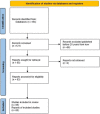Fournier's Gangrene: A Coexistence or Consanguinity of SGLT-2 Inhibitor Therapy
- PMID: 36106208
- PMCID: PMC9450557
- DOI: 10.7759/cureus.27773
Fournier's Gangrene: A Coexistence or Consanguinity of SGLT-2 Inhibitor Therapy
Abstract
Background: Sodium-glucose cotransporter-2 inhibitors (SGLT2 inhibitors) are a relatively new class of medications used for the management of type II diabetes mellitus targeting the kidneys. Within the last decade, several warnings have been issued regarding the development of severe genitourinary infections, including necrotizing fasciitis, or Fournier's gangrene, in those with pre-existing type II diabetes and concomitant use of this drug class.
Objective: The purpose of this review is to highlight and discuss the factors contributing to the development of Fournier's gangrene, its pathogenesis, and a review of existing literature describing patient outcomes, treatment, and future directions regarding early detection of this complication.
Methods: Articles and studies addressing effective treatment adherence and key factors contributing to Fournier's gangrene with SGLT2 inhibitors were identified by effective keyword searches in PubMed Central, Google Scholar, and Cochrane, as well as the references found within these articles.
Results: Using the keywords provided, 55 case reports, review articles, and meta-analysis reports written within the last 20 years were utilized as the source of the data presented in this systematic review article.
Keywords: diabetes mellitus; fournier’s gangrene; genitourinary infections; medication side effects; sodium–glucose cotransporter-2 inhibitors.
Copyright © 2022, Chowdhury et al.
Conflict of interest statement
The authors have declared that no competing interests exist.
Figures



References
-
- Fournier gangrene associated with sodium-glucose cotransporter-2 inhibitors: a review of spontaneous postmarketing cases. Bersoff-Matcha SJ, Chamberlain C, Cao C, Kortepeter C, Chong WH. Ann Intern Med. 2019;170:764–769. - PubMed
Publication types
LinkOut - more resources
Full Text Sources
